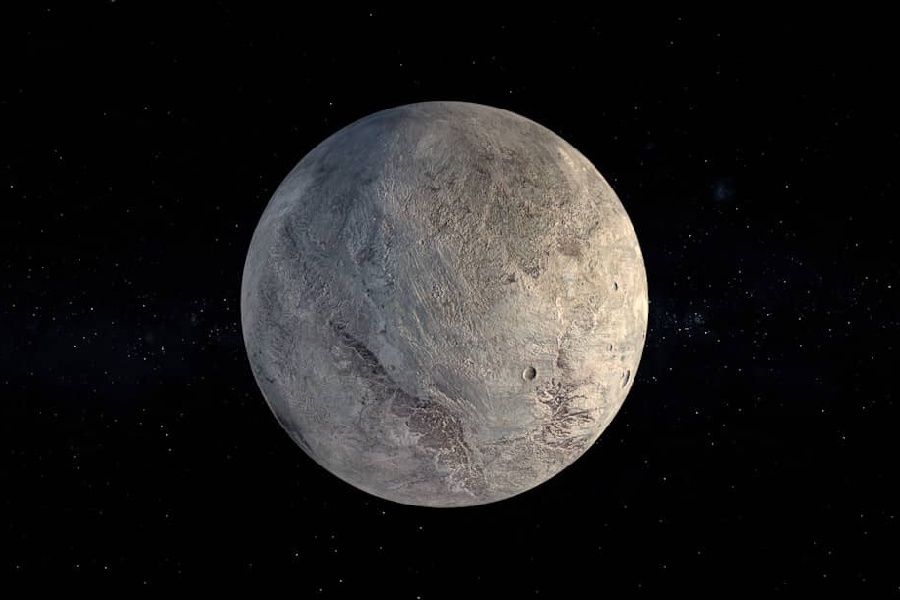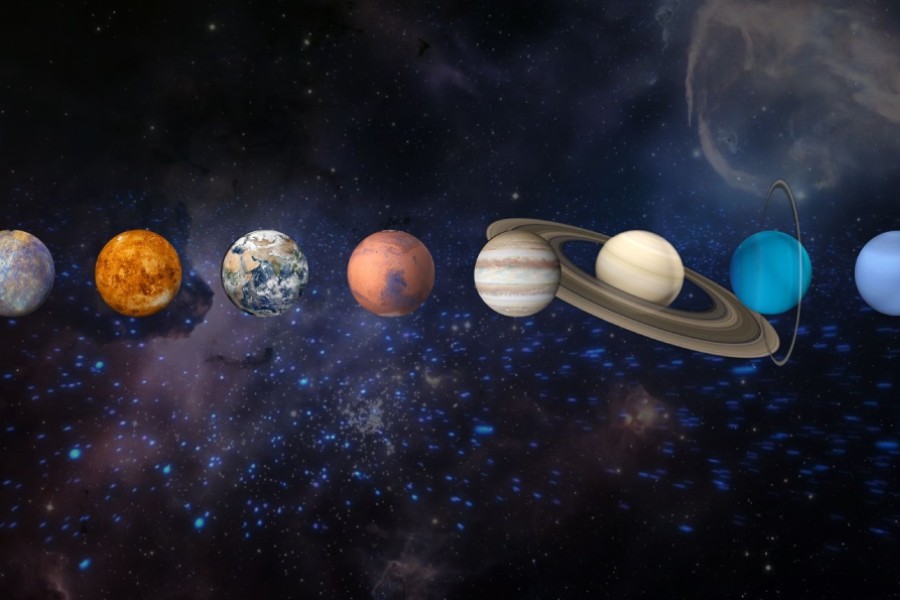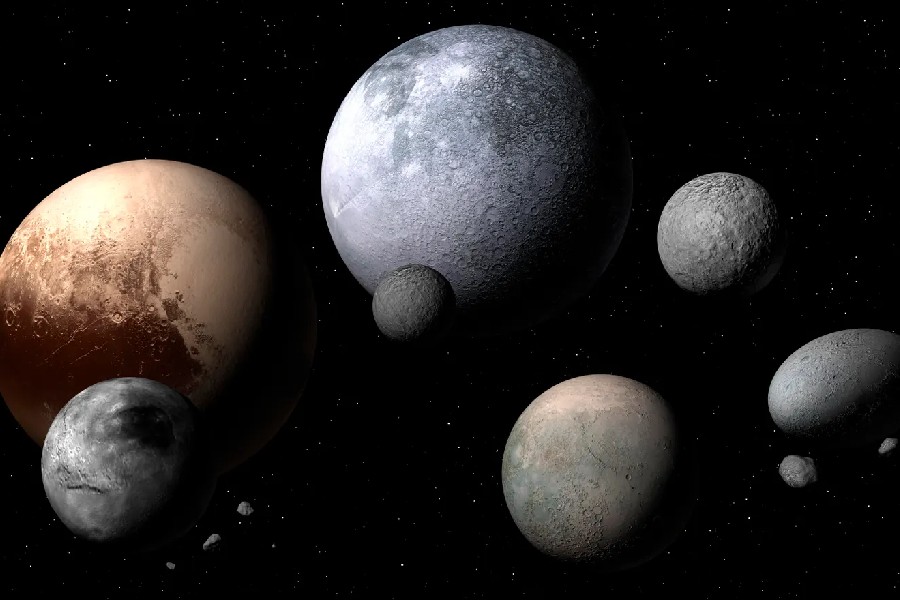Among icy denizens stirring in the darkness of the outer solar system, one world emerges luminous yet contentious – Eris. Ever since its discovery and early classification as a planet in 2005, this distant orb has found itself at the center of a passionate debate – what constitutes a planet? What is Eris? Is Eris a planet?
Does an object of comparable size to Pluto discovered beyond Neptune deserve equal planetary standing? Or does Eris warrant its own distinct classification? This article will delve into key characteristics that distinguish dwarf planets from full-fledged planets and discover some fun facts about Eris.
Exploring Eris’s compelling orbital dynamics, surface traits, and role within the brimming Kuiper belt provides necessary context. We will revisit the pivotal IAU decision that saw Pluto and Eris relegated to dwarf planet status.
The case of Eris as a potential tenth planet shows how science doesn’t just progress by making discoveries but also by fiercely defending interpretations based on new data.

Is Eris a Planet?
Is Eris a planet? Where is Eris located? Eris is a dwarf planet located in the scattered disc – a region of the outer solar system. Discovered in 2005, Eris initially sparked debates about its planetary status. However, the International Astronomical Union (IAU) redefined the criteria for classifying celestial bodies in 2006.
Under these criteria, Eris meets the qualifications for a dwarf planet, as it orbits the Sun, is spherical in shape, but has not cleared its orbital path of other debris.
While not classified as a full-fledged planet, Eris remains a significant and intriguing member of our solar system, contributing to our understanding of its diverse and dynamic components.
The Discovery of Eris
The hunt for distant celestial bodies
For centuries, astronomers pursued greater cosmic perspectives through advancing observational technology. By the early 21st century, digital photography enabled surveys probing the solar system’s outskirts for icy bodies beyond Neptune. Scientists meticulously scanned swaths of sky in visible and infrared light, seeking faint indicators of frozen worlds stirring far from the Sun‘s warmth.
The quest culminated when improved digital sensors and computerized analysis unlocked sensitivity to nearly imperceptible motions against the blackness of space. This astronomical bounty hunt marked a pivotal escalation in the search for planets, asteroids, comets, and other denizens populating the Kuiper belt’s depths.
Eris enters the cosmic stage – A 2005 discovery
As photographic surveys continued monitoring star fields nightly, astronomers detected a previously unknown celestial body in 2003. Dubbed 2003 UB313, further tracking confirmed this remote participant in our Sun’s orbit.
In July 2005, the discovery team led by Mike Brown officially revealed their probable tenth planet to an eager world.
With a diameter some 25% wider than Pluto, 2003 UB313 warranted planetary status. But after lengthy debates, the International Astronomical Union (IAU) designated both Pluto and Eris dwarf planets that August, catalyzing lasting controversy.
The name Eris arises from the Greek goddess symbolizing strife and discord – apt for a world triggering ongoing disputes over its rightful place in our cosmic neighborhood.

The International Astronomical Union (IAU)
Redefining planetary criteria in 2006
In 2006, the IAU passed a resolution establishing three criteria that a celestial body must meet to be classified as a planet. This decision emerged from growing disputes over whether Pluto, Eris, and other Kuiper belt objects should constitute planets given their smaller sizes and orbital dynamics, unlike the eight traditional planets.
The IAU has the authority to name and classify astronomical objects, necessitating a formal decision on the shifting societal and scientific conception of what defines a planet with new discoveries.
Criteria for planetary classification – Clearing the orbital path
According to the IAU, a planet must meet three defining criteria:
- It must orbit the Sun
- It must have sufficient mass and gravity to achieve hydrostatic equilibrium and form a nearly round shape
- It must have “cleared the neighborhood” around its orbital path by gravitationally dominating that zone rather than sharing the orbit with other objects
This third condition regarding orbital path clearance proved pivotal in the IAU’s designation of Pluto, Eris, and other sizable Kuiper belt objects as dwarf planets rather than full planets. Their orbits overlap with countless smaller icy bodies, debris, and other dwarf planets like Haumea and Makemake.
The Debate on Planetary Status
Eris vs. Pluto – A celestial duel
Eris unwittingly found itself central in debates over what constitutes planethood. As the first Kuiper belt object discovered definitively larger than Pluto, Eris challenged conceptions of icy worlds orbiting unseen in the depths of the outer solar system.
With their comparable sizes yet sharply diverging orbits, Eris and Pluto showcase a celestial duel, symbolizing tensions between traditional notions of planethood and our expanding cosmic perspective as more small planets emerge from obscurity.
The role of IAU
As public fascination with Eris’s discovery collided with bafflement over taxonomy, the International Astronomical Union faced growing pressure to resolve matters of science but also semantics.
With no existing category between planets and smaller solar system bodies, the IAU passed a resolution in 2006 defining planets and dwarf planets, designating both Pluto and Eris as dwarfs based on factors like orbital dynamics.
Their decision showcases the occasional role governing scientific bodies play, adjudicating both cosmic matters and social debates over shifting worldviews.

The Dwarf Planet Classification
Understanding the dwarf planet category
The term “dwarf planet” introduces a nuanced classification in our celestial lexicon. Understanding the intricacies of this category sheds light on the diverse inhabitants of our solar system.
Dwarf planets are celestial bodies that orbit the Sun, much like traditional planets. However, they differ in their ability to clear their orbital paths of debris, a key criterion set by the International Astronomical Union. This distinction places them in a unique cosmic category.
Characteristics of dwarf planets
Dwarf planets exhibit characteristics common to both planets and asteroids. They possess sufficient mass for a spherical shape, yet their orbital domains often intersect with other celestial bodies, creating a dynamic interplay within their cosmic neighborhoods.
Key differences between planets and dwarf planets
The primary distinction lies in orbital clearance. While planets dominate their orbital domains, dwarf planets share space with other objects, reflecting a more communal cosmic existence. This difference underscores the dynamic interactions within the diverse regions of our solar system.
Size and composition
While both planets and dwarf planets boast a spherical shape, the size and composition of dwarf planets vary widely. Some, like Pluto and Eris, possess moons, adding an additional layer of complexity to their cosmic character. Exploring these differences provides insights into the diverse nature of celestial bodies.
Categorization challenges
The classification of celestial bodies as either planets or dwarf planets is not always straightforward. Objects like Pluto, once considered the ninth planet, underwent reclassification. Navigating the challenges of categorization highlights the evolving nature of astronomical knowledge.
Eris Characteristics and Composition
What does Eris look like?
With a diameter of approximately 1,445 miles (2,326 kilometers), Eris rivals Pluto in size and ranks among the largest Kuiper belt objects. Models suggest a dense rocky core constitutes a third of its mass, enveloped by a thick icy mantle comprising methane and nitrogen ices.
Eris temperatures of -240°C would take on the consistency of glass on its surface. Its surface composition shows the highest concentrations of methane ice in the solar system. In addition to methane deposits, tholins likely give Eris its reddish hue, and this makes it clear what color is Eris.
Orbital dynamics – Eris’s dance in the outer solar system
How far is Eris from the sun? How long is a year in Eris and what’s Eris orbit inclination?
Eris follows a highly eccentric orbital path that carries it much farther out from the Sun than dwarf planet Pluto. Eris’s average distance from the Sun is over 68 AU. However, its orbital ellipse stretches from a frigid 38 AU at perihelion to a staggering 97 AU at aphelion, taking 557 years to complete one cosmic lap.
With an orbital inclination tilting 44° from the main plane planets inhabit, Eris periodically journeys far above and below other Kuiper belt denizens. The combination of an eccentric orbit, even by outer solar system standards, and dramatically inclined orbital tilt showcase Eris’s role as an outlier both regionally and dynamically.
Conclusion
Is Eris a planet? While Eris doesn’t qualify as a full-fledged planet under the International Astronomical Union’s definitions, its intriguing story contributes to discussions around what truly constitutes planethood.
As debates continue, Eris serves as a microcosm for why science progresses less by lone discoveries and more through rigorous analysis of new data challenging existing worldviews.
We hope this overview has provided insights into the notable traits that distinguish dwarf planets like Eris from planets, while showcasing the role of governing scientific bodies in navigating both cosmic and social tensions when shifting paradigms emerge.
Regardless of its contested status, Eris remains a valuable member of our solar system family, helping unveil the remarkable diversity beyond Neptune’s orbit. Its mysteries will likely endure alongside lingering questions on the essence of planethood.
Frequently Asked Questions
Is Eris like Pluto?
Yes, Eris shares similarities with Pluto in several regards. Like Pluto, Eris has sufficient mass and gravity to be nearly spherical but has not cleared its orbital path around the Sun of debris. Both worlds have orbits tilted with respect to the main plane of the solar system.
Determining how cold is Eris makes it resemble Pluto, where both exhibit comparable extremely cold, icy surface compositions with abundant frozen methane. These traits contributed to the IAU classifying both bodies as dwarf planets rather than full planets in 2006.
Are there any potential moons or natural satellites orbiting Eris?
As of 2022, astronomers have not yet confirmed the existence of any natural satellites orbiting Eris.
When it comes to moons, Eris has only one relatively small moon called Dysnomia which has an estimated diameter of about 380 miles (615 kilometers). The exact composition and characteristics of Dysnomia are still being studied by scientists.
Why is Eris so far from the Sun?
Eris orbits much farther from the Sun than dwarf planets like Pluto, primarily due to gravitational interactions early in the solar system’s formation. Models suggest Neptune originally formed closer to the Sun before gradually migrating outward over hundreds of millions of years.
This migration disrupted the orbits of small icy objects like Eris, scattering them further outward through gravitational interactions. Eris’s vast distance and eccentric orbit likely originate from such outer solar system dynamical upheaval billions of years ago.
